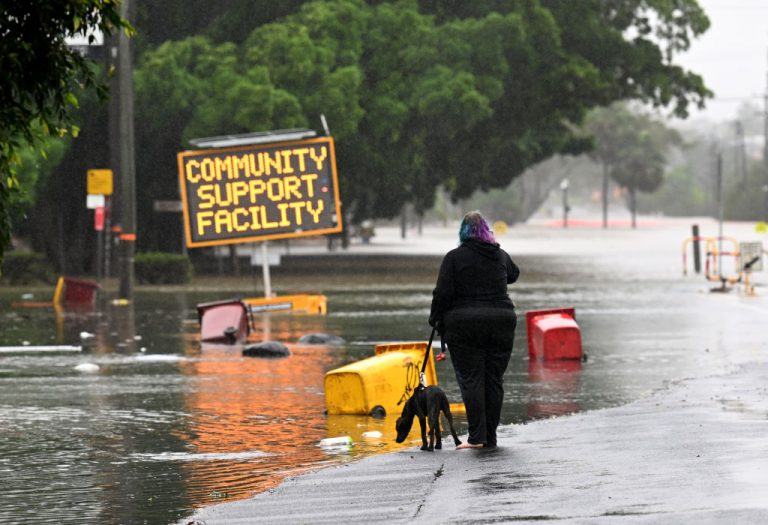Thousands of Australians have been forced from their homes for the second time in a month after torrential rain burst river banks and levees inundating communities with flood waters.
Several communities in northern New South Wales had already been struggling with the aftermath of record flooding earlier in the month when the region received a month’s worth of rain in just six hours and now residents are grappling with yet another major flooding event.
New South Wales emergency services minister, Stephanie Cooke said during a media briefing, “Unfortunately overnight, our worst fears have been realised with significant heavy rainfall across already saturated landscapes.”
Scenes of flooded roadways, submerged shops, and community members wading through knee-deep murky waters, some carrying people on their backs, have emerged online.
Particularly heavy hit is the popular tourist community of Lismore which received some 400 millimetres of rain over a 24-hour period and was also devastated by flooding at the end of February.
Success
You are now signed up for our newsletter
Success
Check your email to complete sign up
On February 28, Lismore’s some 43,000 residents scrambled to get out of the way of record flooding, many taking to roof tops to shelter from the raging currents. The floods claimed the lives of 22 people and left city streets and homes submerged under several inches of water.
Today the scene is much worse. Local resident Dominic Pezzutti told Reuters, “It’s just heartbreaking seeing the water come up again and the amount of people that are going to lose everything again.”
A La Niña climate pattern, that is typically associated with greater rainfall, is being blamed for the flooding.
Dr. Nina Rider from the University of New South Wales said the La Niña weather event meant further heavy rainfall events were likely on the way, meaning residents already struggling with the devastation should brace for further disruption.
Annick Nuylle, a shop owner from Byron Bay, another popular tourist destination located approximately 465 miles north of Sydney, told Reuters, “Oh it’s devastating. I’ve had this store for 17 years so I’ve put many years and a lot of love and hard work, so no matter if there is or there is no insurance, I think it’s my livelihood and it has been my life for 17 years, so it’s very sad.”
Sydney, the state’s largest city has already recorded 21.1 inches of rain so far this month making it the wettest March on record.
Recommendation to relocate
In Lismore, local media reported that there was no official warning that a local levee had been breached after emergency sirens malfunctioned.
Dr Tom Mortlock from Aon and Macquarie University said that the city’s levee system was built in 1999 to protect the area from the kind of extreme flooding expected once in a decade, however, the protection only reduces flood risk by 10%, according to an analysis conducted by his university.
Mortlock said that the “relatively low standard of flood protection” means that Lismore’s defense is “significantly less” than the national average.
The reality is prompting some to recommend that entire communities be relocated from the flood prone areas.
Professor Jamie Pittock from the Australian National University told Sky News, “repeated flood risk to key parts of towns like Lismore highlights the grave risks of rebuilding in harm’s way,” adding that,”No amount of house raising or flood resilient materials will adequately reduce flood risks,” while calling on the government to assist local residents to relocate out of the area.


















